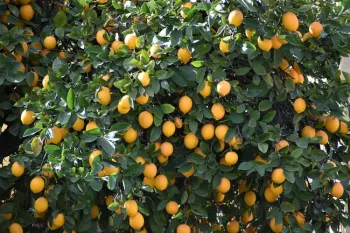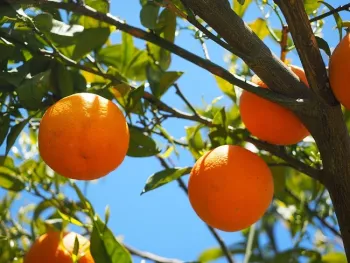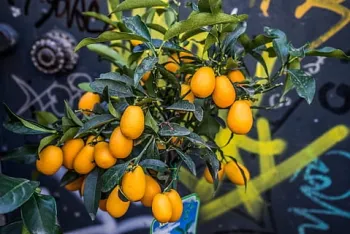
Citrus trees grow best in loam or sandy loam soil, but you can grow them in most soils that have good drainage. If your soil drains poorly, you might try planting in a raised bed or on a mound. Plant your trees in an area that receives full sun, and allow enough room for the tree's mature size. I don't recommend planting in a lawn area because it's difficult to irrigate both the citrus and the lawn correctly. Also, the grass tends to absorb many of the nutrients needed by the tree.

Dig the planting hole just deep enough to plant the tree at the same level that it was in the nursery. The diameter of the hole should be about 6 inches larger than the root ball. If the hole is too deep, the tree will settle too much after planting. Trees that settle too deep are likely to be killed by crown rot, a fungus disease that frequently develops where the soil covers the bark of the tree.
You can place balled and burlap-wrapped trees in the planting holes without removing the cloth sacking that covers the roots. Plant them a little higher than they were in the nursery, allowing about 3 inches for settling. Try to have the uppermost roots branch out at about ground level after the trees have settled.

Do not put any fertilizer in the hole when planting your tree because it may damage the roots. It's safer to apply fertilizer to the surface of the soil after you've planted. If you use manure, use it lightly because roots may be damaged by salts which manures contain.
Citrus trees do very poorly in dry soil, so be sure to pay close attention to irrigation, especially during the first summer.
Ed Perry is the emeritus Environmental Horticultural Advisor for University of California Cooperative Extension (UCCE) in Stanislaus County where he worked for over 30 years.

